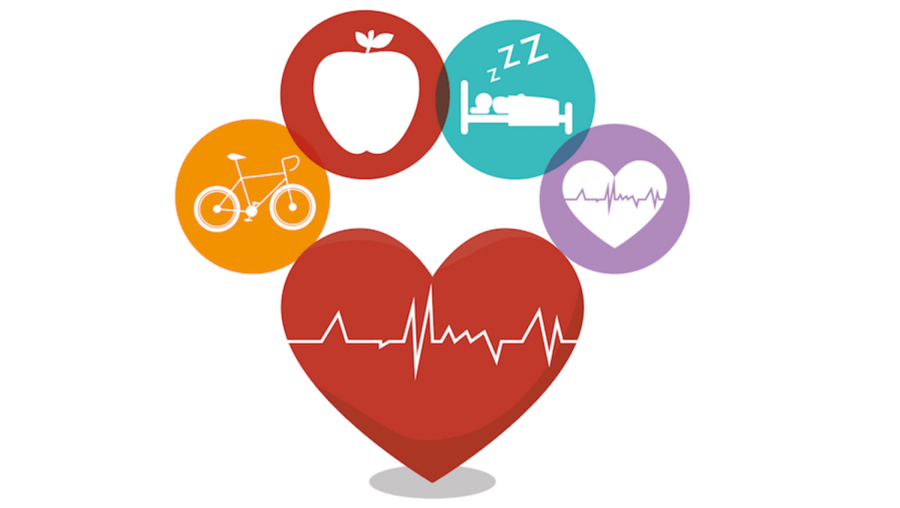Preventing Sports Injuries: A Comprehensive Approach to Safe Physical Activity
Participation in sports and physical activities offers significant benefits for physical and mental well-being, contributing to a healthier lifestyle. However, the risk of injury is inherent in any physical activity, regardless of the participant's skill level. This article explores a comprehensive approach to injury prevention, drawing upon established principles of exercise physiology, biomechanics, and sports medicine. Key concepts discussed include progressive overload (gradually increasing training demands), specificity of training (adapting training to specific sports demands), and the individualized approach (tailoring training to individual needs and limitations).
1. Pre-activity Preparation: Optimizing Physiological Readiness
A structured warm-up, incorporating dynamic stretching and light cardiovascular activity, is crucial. This prepares the musculoskeletal system for the ensuing demands, increasing muscle temperature and blood flow, thereby enhancing flexibility and reducing the risk of strains and tears. This aligns with the principles of readiness and preparatory activities, optimizing physiological performance.
2. Strength and Conditioning: Enhancing Musculoskeletal Integrity
Incorporating strength training into a training regimen builds muscle strength and endurance, providing enhanced support for joints and improved stability during athletic movements. This reflects the concept of neuromuscular control; stronger muscles contribute to better proprioception and coordinated movement, mitigating the risk of injury. A well-structured strength and conditioning program, tailored to the specific demands of the sport, is paramount.
3. Biomechanically Sound Technique: Minimizing Strain and Stress
Proper technique is paramount in injury prevention. Mastering the correct biomechanics of movements minimizes stress on joints and muscles, reducing the likelihood of overuse injuries and acute trauma. This principle, rooted in biomechanics, highlights the importance of coaching and instruction in refining technique and promoting safe movement patterns.
4. Protective Equipment: Minimizing the Impact of External Forces
The utilization of appropriate protective equipment, such as helmets, pads, and supportive footwear, significantly reduces the risk of injury from external forces. This aligns with the principles of injury attenuation, effectively minimizing the impact of external forces on the body.
5. Attentive Self-Monitoring: Recognizing and Responding to Physiological Cues
Careful attention to the body's signals is crucial. Pain, discomfort, or unusual fatigue should not be ignored; these symptoms are often indicative of potential injury. Ignoring these signals can lead to chronic problems. This emphasizes the importance of self-awareness and adherence to the principle of individualized training loads, adjusting activity based on the body’s response.
6. Hydration Management: Maintaining Optimal Physiological Function
Adequate hydration is essential for optimal performance and injury prevention. Dehydration impairs physiological function, increasing the risk of muscle cramps and heat-related illnesses. This aligns with the principles of homeostasis, emphasizing the need to maintain optimal internal body conditions.
7. Recovery and Regeneration: Facilitating Tissue Repair and Adaptation
Sufficient rest and recovery between training sessions is vital for tissue repair and adaptation. Overtraining leads to overuse injuries and diminished performance. This principle of recovery periodization dictates that adequate rest allows for the body's physiological adaptation to training stimuli.
8. Cross-Training: Diversifying Physical Demands and Reducing Overuse Injuries
Cross-training, incorporating diverse physical activities, distributes the physical load across multiple muscle groups, reducing the risk of overuse injuries associated with repetitive movements. This promotes balanced fitness and reduces strain on specific muscle groups.
9. Progressive Overload: Managing Training Intensity and Volume
The principle of progressive overload dictates a gradual increase in training intensity and volume. Sudden increases in training demands significantly increase the risk of injury. This is a core tenet of effective training, allowing for the body to adapt safely to increasingly challenging stimuli.
10. Appropriate Footwear: Providing Support and Cushioning
Proper footwear that provides adequate support and cushioning is essential, particularly in high-impact activities. Inadequate footwear increases the risk of foot and ankle injuries. This is crucial for maintaining biomechanical efficiency and protecting the lower extremities.
11. Post-activity Recovery: Promoting Muscle Relaxation and Recovery
A cool-down routine, including static stretching, facilitates muscle relaxation and recovery, reducing muscle soreness and stiffness. This aids in reducing delayed-onset muscle soreness (DOMS) and promotes faster recovery.
12. Self-Limitation: Respecting Individual Capabilities
Pushing physical limits beyond the body's capacity significantly increases injury risk. Recognizing individual limitations is crucial for safety and long-term health. This is about understanding and respecting personal limits and avoiding risky behaviors.
13. Professional Guidance: Seeking Expert Advice and Support
Seeking professional guidance from healthcare providers and certified athletic trainers is advisable, especially for individuals with pre-existing conditions or those new to a sport. Expert advice ensures safe and effective training practices.
14. Environmental Awareness: Identifying and Mitigating Environmental Risks
Environmental awareness, identifying and mitigating potential hazards in the training environment, is critical. Uneven surfaces, debris, or poor lighting can increase the risk of accidents. This underscores the importance of situational awareness and risk assessment.
15. Adherence to Coaching Instructions: Utilizing Expert Knowledge and Guidance
Following the guidance of experienced coaches is critical, particularly in team sports. Coaches provide expertise in technique, training programs, and safety protocols.
Conclusions and Recommendations
The prevention of sports injuries requires a multifaceted approach integrating physiological, biomechanical, and environmental considerations. This necessitates a holistic strategy that emphasizes proper preparation, appropriate training, careful self-monitoring, and adherence to safety protocols. The application of principles like progressive overload, specificity of training, and an individualized approach is critical for minimizing injury risk and optimizing athletic performance. Future research should focus on developing more personalized injury-prevention strategies incorporating advanced technologies like wearable sensors for real-time feedback and predictive modeling to identify individuals at higher risk. Implementing these recommendations can significantly reduce sports-related injuries, promoting safer and more enjoyable participation in physical activities.
Reader Pool: Considering the multifaceted nature of sports injury prevention outlined in this article, what additional strategies or interventions do you believe would be most impactful in reducing injuries within specific sports or populations?






No comments yet. Be the first to share your thoughts!